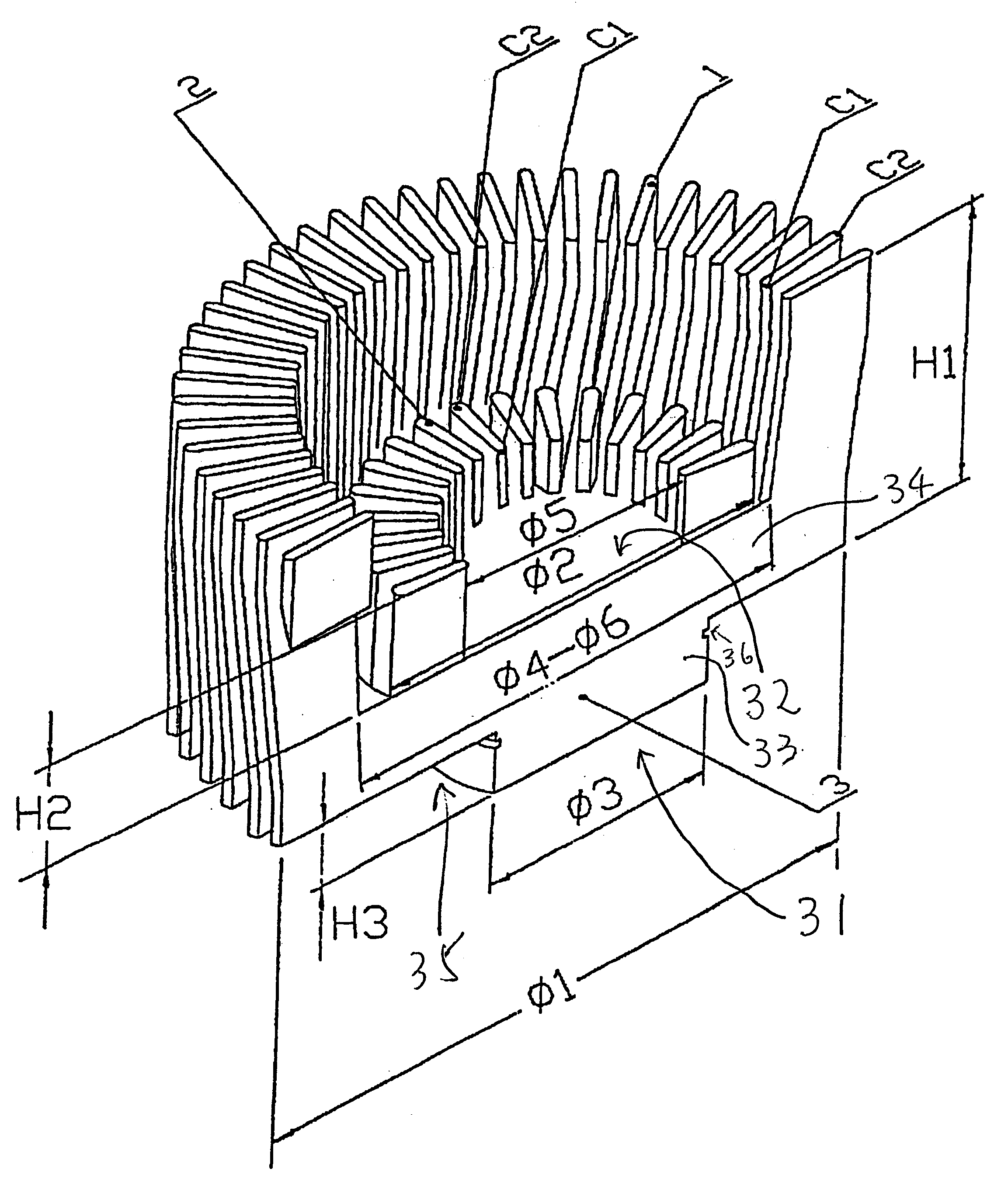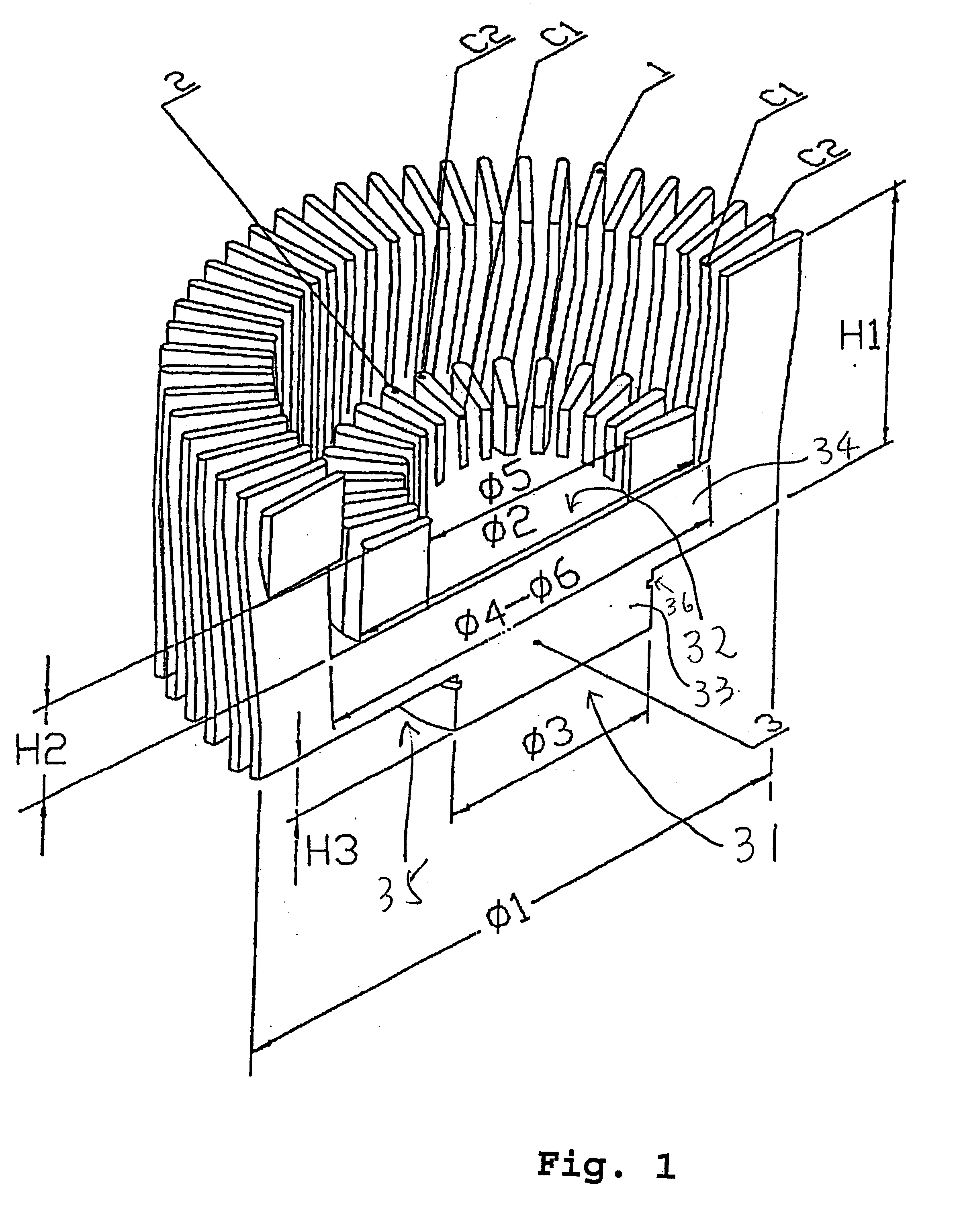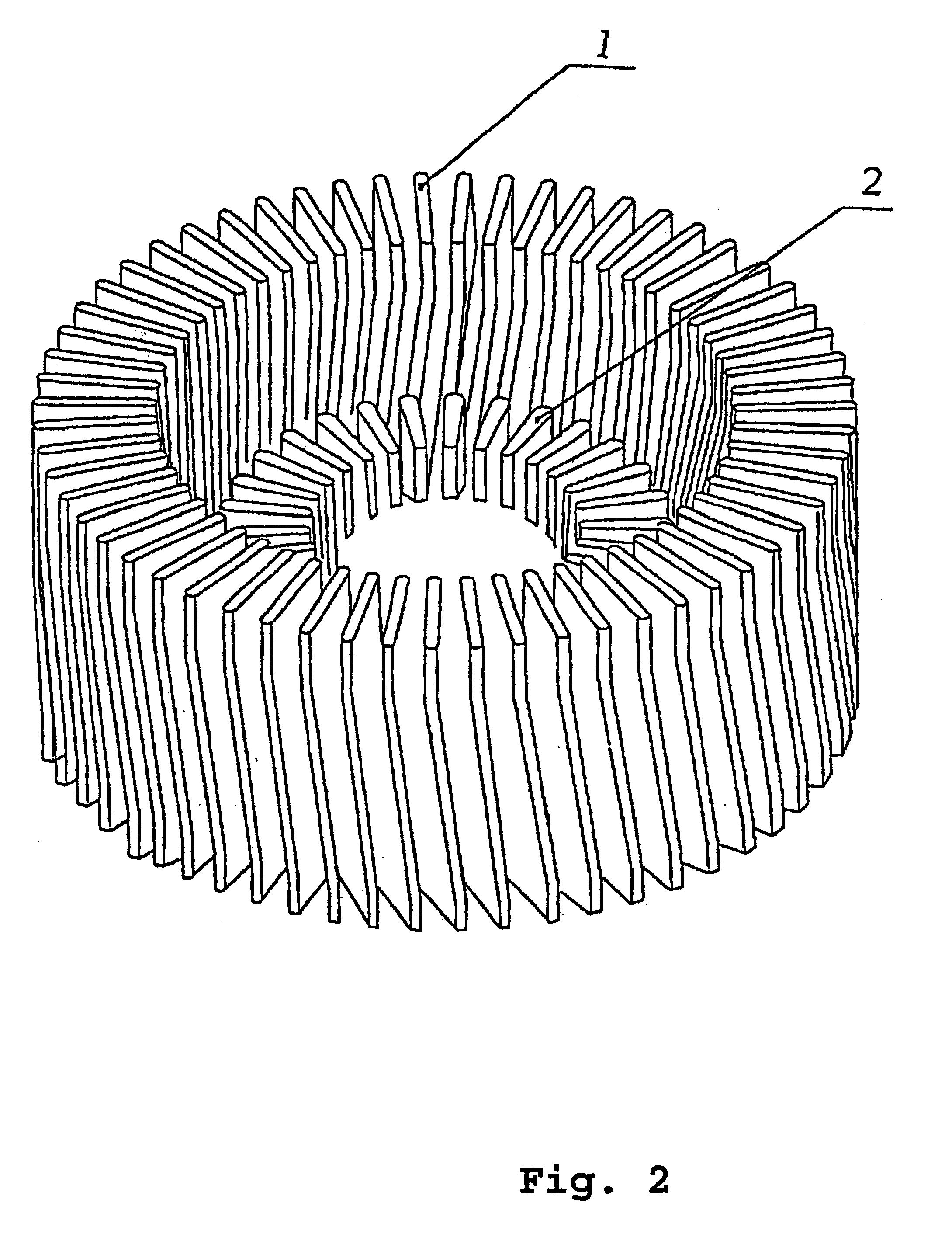Heat sink
a heat sink and heat sink technology, applied in the field of heat sinks, can solve the problems of inconvenient use of milled heat sinks, inefficient or unreliable heat sinks, and an important issue of heat generated by a single microprocessor, so as to improve heat dissipation ability, less resistance to the flow of cooling air, and enhanced heat dissipation area
- Summary
- Abstract
- Description
- Claims
- Application Information
AI Technical Summary
Benefits of technology
Problems solved by technology
Method used
Image
Examples
Embodiment Construction
Preferred embodiments of the present invention will be explained by way of examples and with reference to the accompanying drawings, in which:
FIG. 1 is a perspective view of a first preferred embodiment of the heat sink of the present invention when viewed from the top (base portion being hidden);
FIG. 2 is a perspective view showing the heat sink of FIG. 1 with part of the heat sink cut away at about the middle;
FIG. 3 is a side view of the heat sink of FIG. 1 with the rightof the figure showing the cross-section of the heat sink;
FIG. 4 is a plan view of the heat sink of FIG. 1 when viewed from above;
FIG. 5 is a side view of a second preferred embodiment of the present invention with the right side of the figure showing a cross-sectional view of the heat sink;
FIG. 6 is a plan view of the second preferred embodiment when viewed from above;
FIG. 7 is a top perspective view of the embodiment of FIG. 5 with part of the heat sink cut away at about the middle;
FIG. 8 is a perspective view of...
PUM
 Login to View More
Login to View More Abstract
Description
Claims
Application Information
 Login to View More
Login to View More - R&D
- Intellectual Property
- Life Sciences
- Materials
- Tech Scout
- Unparalleled Data Quality
- Higher Quality Content
- 60% Fewer Hallucinations
Browse by: Latest US Patents, China's latest patents, Technical Efficacy Thesaurus, Application Domain, Technology Topic, Popular Technical Reports.
© 2025 PatSnap. All rights reserved.Legal|Privacy policy|Modern Slavery Act Transparency Statement|Sitemap|About US| Contact US: help@patsnap.com



